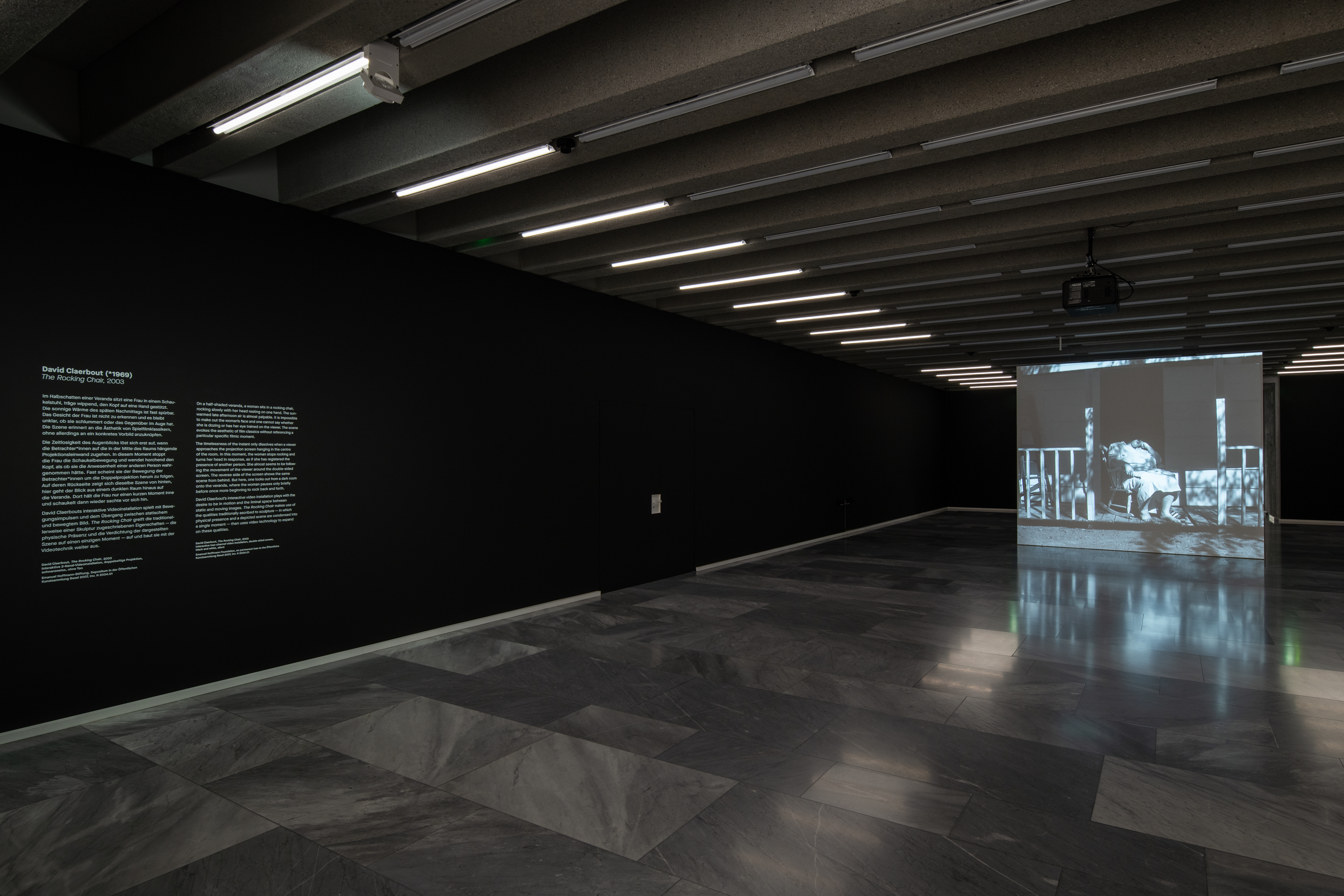
Rocking Chair
2003, double-screen interactive video installation, black & white, silentFrom the very first idea for this piece, it seemed very important to me that the projection screen should be very flat, so that the space that is suggested between both points of view (front and rear) would be flattened. This would eliminate the assumption that “represented space” in the piece wants to compete with the “physical space” (of the room in which the projector is installed). By flattening and limiting the represented space to both sides of a projector screen, the work is left to survive through its compositional qualities. It may be a hidden indicator but I think it is an important one. It creates a usable void in the play on the movement of the woman’s head. The second thing to which to pay attention during production was establishing the sensation that the represented scene was bathed in sunlight. Thus it could distance itself from the dark that is conditional to video projection. The third point in the composition is the heaviness of a woman half asleep, half observing the spectator. As she rocks the chair, she becomes a means of measuring and dividing time into a (waiting) rhythm. This sets the mood of this piece: here is a woman that sits in a scene, presented as an actor but hardly interested in interaction or performance. She sits in the sunny warmth ticking away time, the viewer just in a dark room. In this situation the spectator must unavoidably walk past the screen to leave the room. As they take a moment to look at the back of the woman, she stops the rocking of the chair and turns to listen (not look), as if she has noticed the presence of somebody about to leave. The meeting between these virtual and real situations gives the feel of an unaccomplished encounter. The relationship between the beholder and the actor is not established.
further reading







David Claerbout ©2026